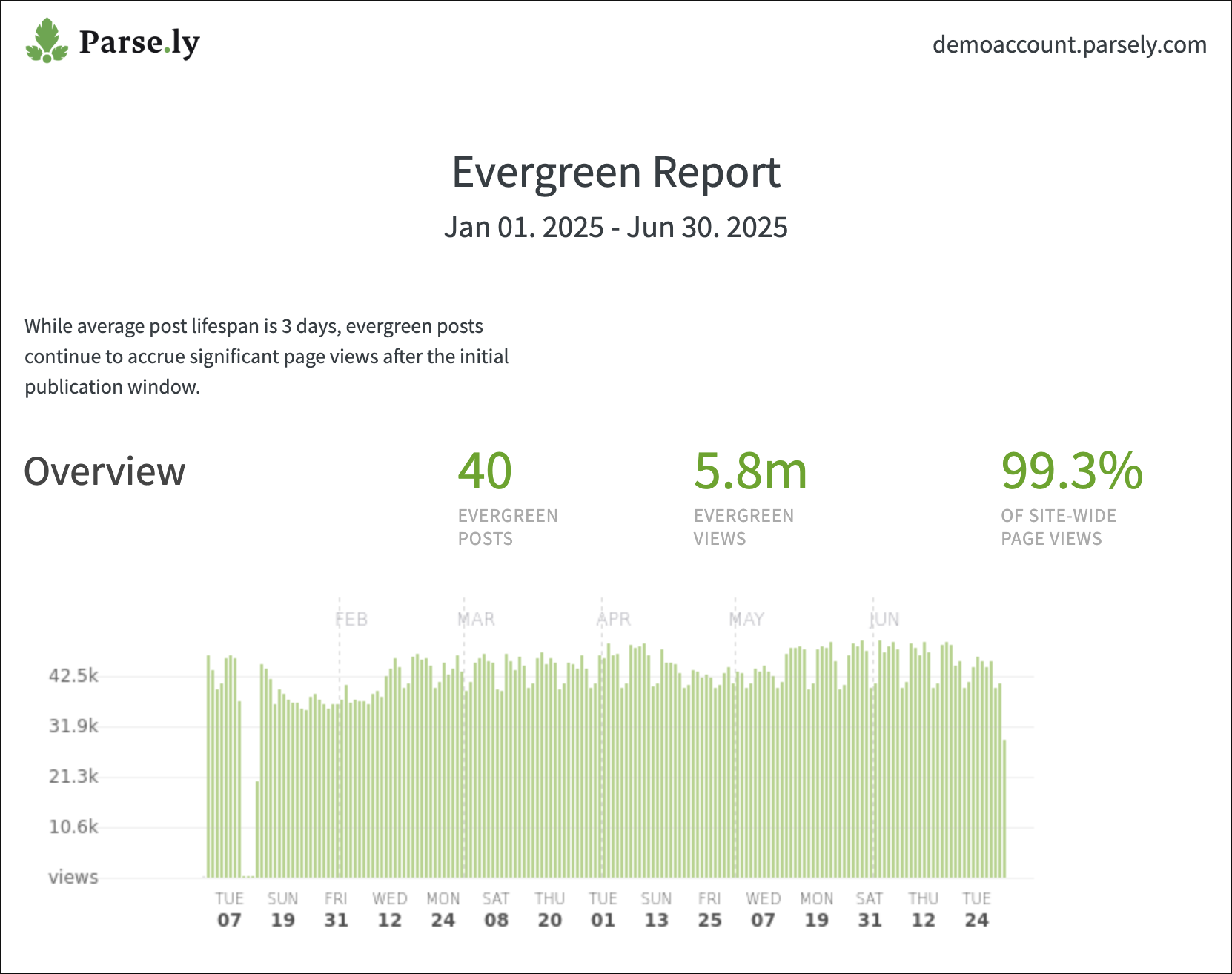Evergreen Content report
The Evergreen Content report focuses on posts that attract readers long after publication. Most evergreen posts are not topical, so they have a longer median lifecycle than a typical online article, which is about three days.
Parse.ly uses a proprietary algorithm to calculate evergreen or evergreen candidate posts. For a post to be considered evergreen, it must be at least 20 days old and still receiving significant traffic. For a post to be considered an evergreen candidate, it must be between 8-20 days old and still receiving significant traffic.
Follow Parse.ly’s guide to creating reports to create a new Evergreen Content report.
Report sections
The Evergreen Content report is divided into three sections.
Overview

At the top of the report, the overview section displays the:
- Total number of evergreen posts.
- Total page views of evergreen content.
- Percentage of site-wide page views attributed to evergreen content.
Content comparison

This report section compares evergreen and site-wide content by the most-viewed sections, authors, and tags.
Top posts

The final section of the Evergreen Content report contains listings of the highest performing evergreen posts by visitors and page views, including the overall top evergreen posts and top new evergreen posts.
Use cases
- Evergreen content may be the strongest content on the site: It stands the test of time and can be repromoted when needed.
- Social media managers look to the top evergreen posts for options during a slow news day or week.
- Homepage managers rely on evergreen posts for strong content that can be recycled on the homepage.
- Writers and editors look for trends among evergreen content to replicate previous success.
Tips
- Check out Parse.ly’s guide on How to Repurpose Evergreen Content for ideas on sprucing up evergreen posts.
- The Top Performers report can be filtered to show posts that are evergreen (at least 20 days old) or candidates for becoming evergreen (8-20 days old).
Last updated: July 08, 2025